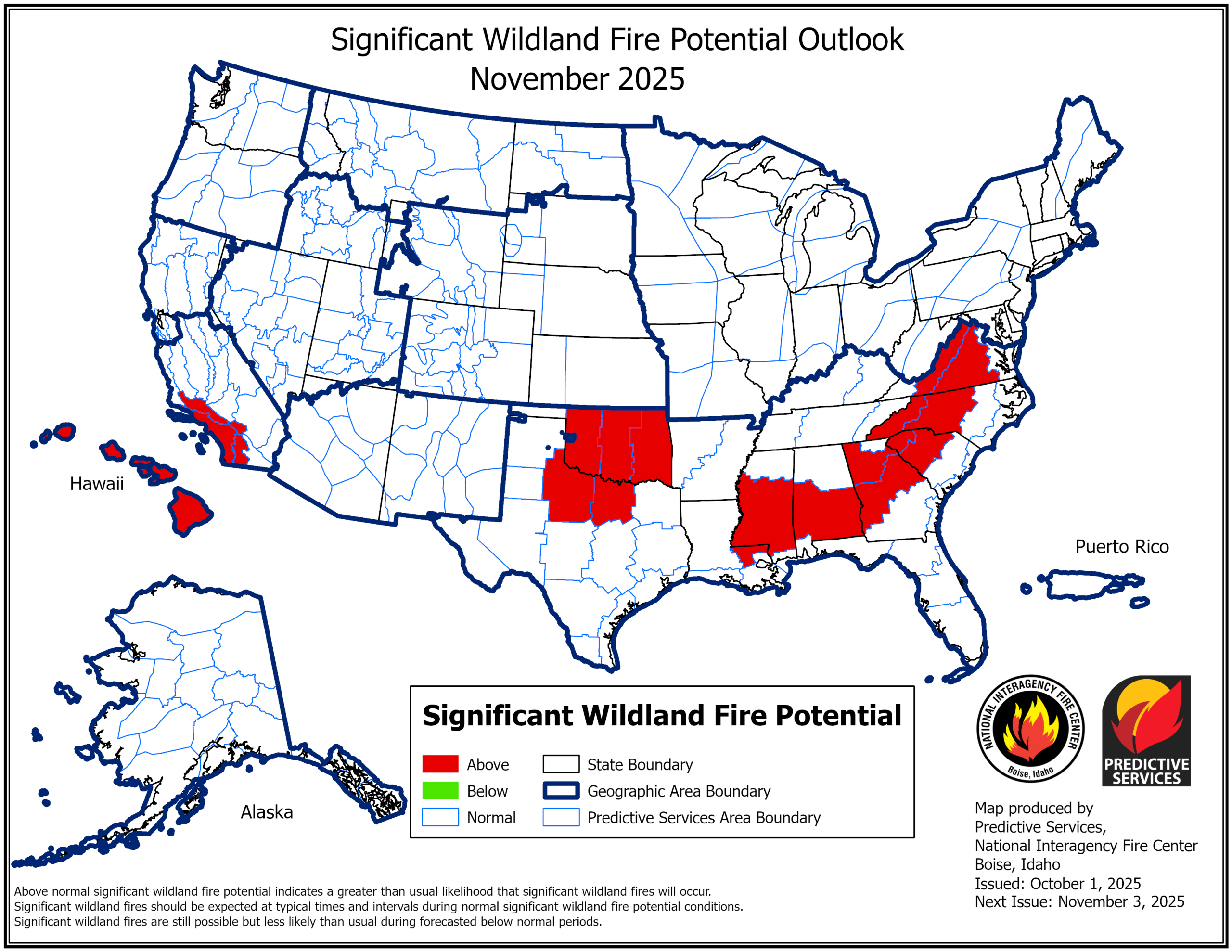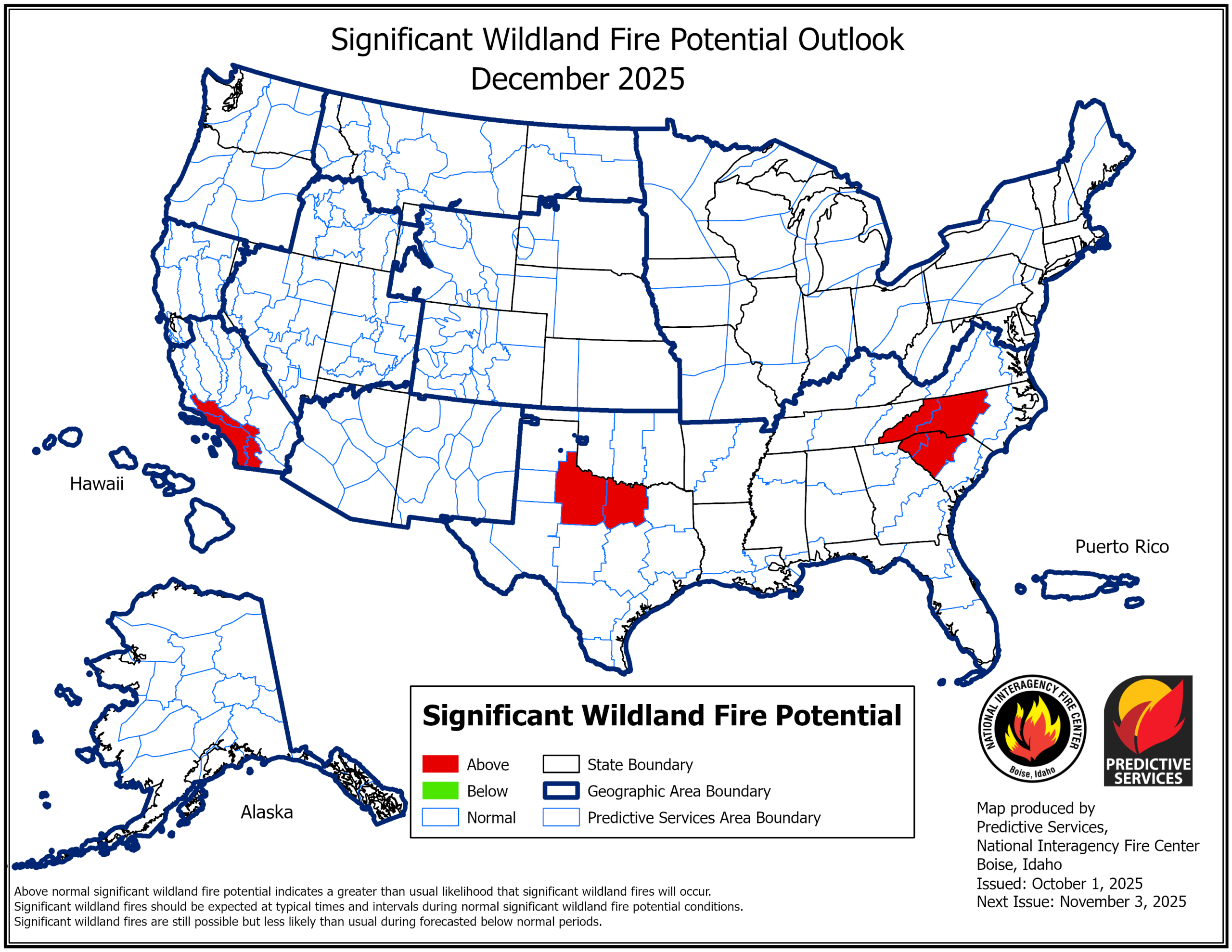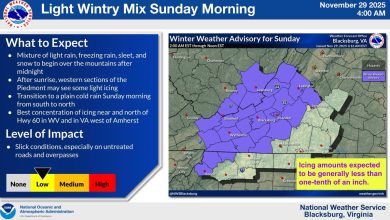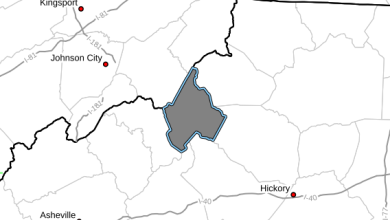
Last Updated on October 8, 2025 8:01 pm
The National Interagency Fire Center outlook for the Southern Area of the United States released October 1, 2025:
Uncertainty remains in the closing months of hurricane season, but a developing La Niña pattern in the Pacific is expected to bring a warmer and drier winter to much of the South — heightening wildfire risks where fuel loads are high.
Drought deepened steadily across the region through September, and if tropical systems continue to bypass the area, significant fire potential is likely to rise in the coming months.
In Texas and Oklahoma, abundant grass growth from an unusually wet spring and summer will pose a major fire hazard as the dormant season begins. Delayed freezes and continued warm weather may keep fine fuels available longer than usual. Dry cold fronts will be the main drivers of wind-driven fires, though any Gulf tropical systems could worsen conditions. Above-normal fire potential is forecast through October and November across central and eastern Oklahoma, North Texas, South Texas and the eastern Hill Country.
In the southern Appalachians — including parts of North Carolina and Virginia — early leaf drop and lingering dryness could lead to above-normal fire activity in October. Debris from Hurricane Helene and past ice storms has left heavy fuels on the ground, increasing the risk of human-caused wildfires. Unless frequent rain or high humidity persists, above-normal fire potential is expected through winter.
Across Alabama, Georgia, Louisiana and Mississippi, worsening drought could fuel an active fall fire season, especially if tropical storms fail to bring relief. The greatest concern is expected in November, when dry and windy conditions are most likely.
Farther north, recent rainfall has eased drought across parts of Arkansas, Tennessee and Kentucky, but forecasters expect a return to dry weather by late fall. Fire potential there is projected to be near normal, though prolonged dryness could quickly elevate risks.
Overall, forecasters warn that widespread dry fuels, combined with La Niña-driven warmth and below-average rainfall, may lead to an active wildfire season across large portions of the South through the winter months.




















